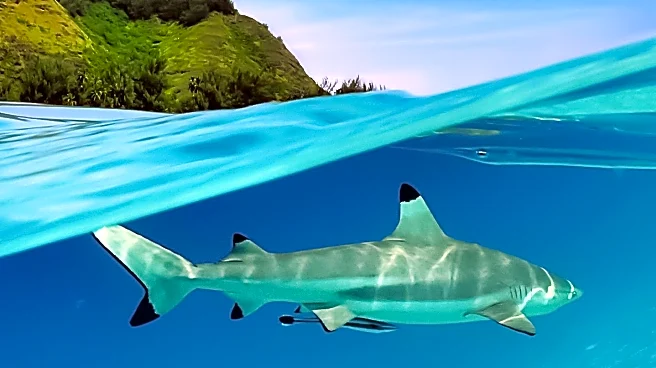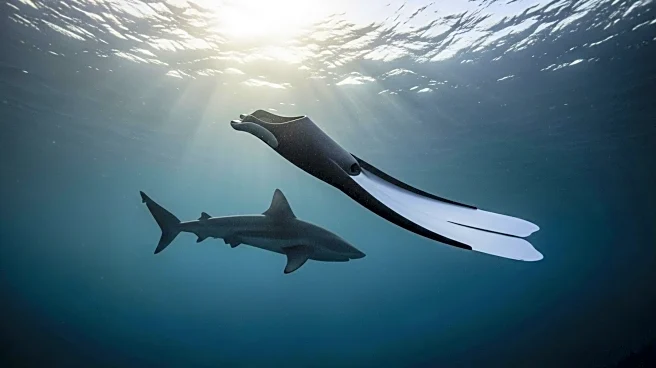What's Happening?
A 54-year-old man was bitten by a shark while attempting a marathon swim from Santa Catalina Island to San Pedro, California. The incident occurred early Tuesday morning, approximately 12 miles off Catalina. The shark, estimated to be 3-to-4 feet long, inflicted non-life-threatening injuries to the swimmer's leg and foot. Los Angeles Fire Department Capt. Adam VanGerpen reported that the swimmer was conscious, alert, and experiencing only mild distress. The swimmer was participating in a long-distance solo swimming competition and had departed Catalina around midnight to avoid busy shipping lanes. An emergency call was made at 1:37 a.m., and the swimmer was quickly attended to by paramedics after being pulled from the water.
Why It's Important?
Shark attacks, while rare, can have significant implications for public safety and local tourism. This incident highlights the potential risks associated with open-water swimming events, particularly in areas known for marine wildlife. The swimmer's decision to start the marathon at midnight underscores the challenges of navigating busy waterways, which are frequented by ferries, cruise ships, and cargo vessels during the day. The response by the Los Angeles Fire Department, which dispatched four boats to the scene, demonstrates the readiness and efficiency of emergency services in handling such incidents. The rarity of shark attacks in the Catalina area, as noted by Capt. VanGerpen, suggests that while the risk is low, it is not negligible.
What's Next?
Following the incident, there may be increased scrutiny on safety measures for open-water swimming events in the region. Organizers might consider additional precautions, such as enhanced monitoring and emergency response protocols, to ensure participant safety. The local authorities could also engage in public awareness campaigns to educate swimmers and tourists about the potential risks and safety practices when swimming in shark-inhabited waters. Additionally, marine biologists might investigate the incident to understand the behavior of sharks in the area and assess any changes in their patterns that could inform future safety guidelines.













